Abstract
The participant in this study was a boy with a long history of self-injurious face slapping. Following a functional analysis indicating that face slapping was maintained by sensory consequences, the participant was given soft wrist weights to wear for progressively longer periods. Data on the frequency of face slapping were collected 5 min before the weights were put on, while the weights were on, and 5 min after the weights were removed. At all other times a protective helmet was placed on the participant's head for 30 min contingent on face slaps. When weights were worn for 30 min each day, face slapping decreased during 5-min observation periods before and after wearing the weights. The use of protective headgear was eliminated by the end of the study. Face slapping did not occur during a follow-up check conducted 5 months after completion of the study.
Full text
PDF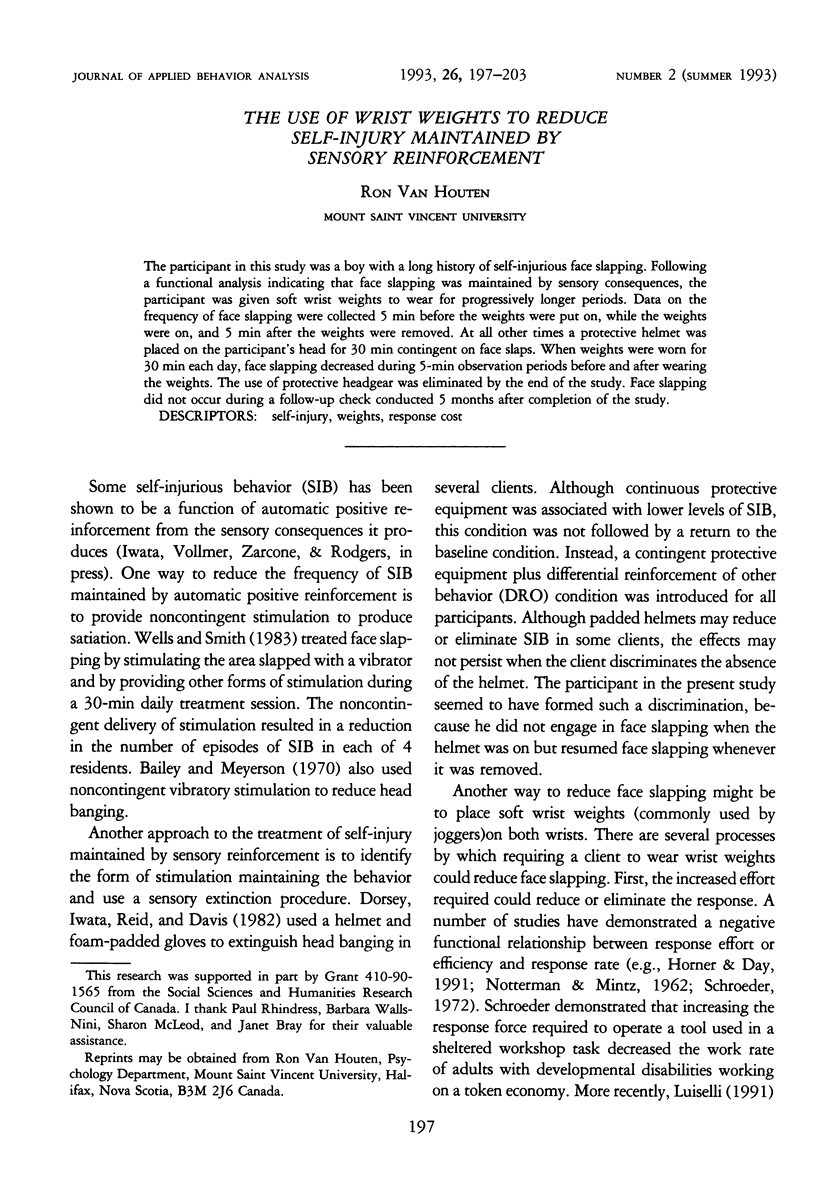
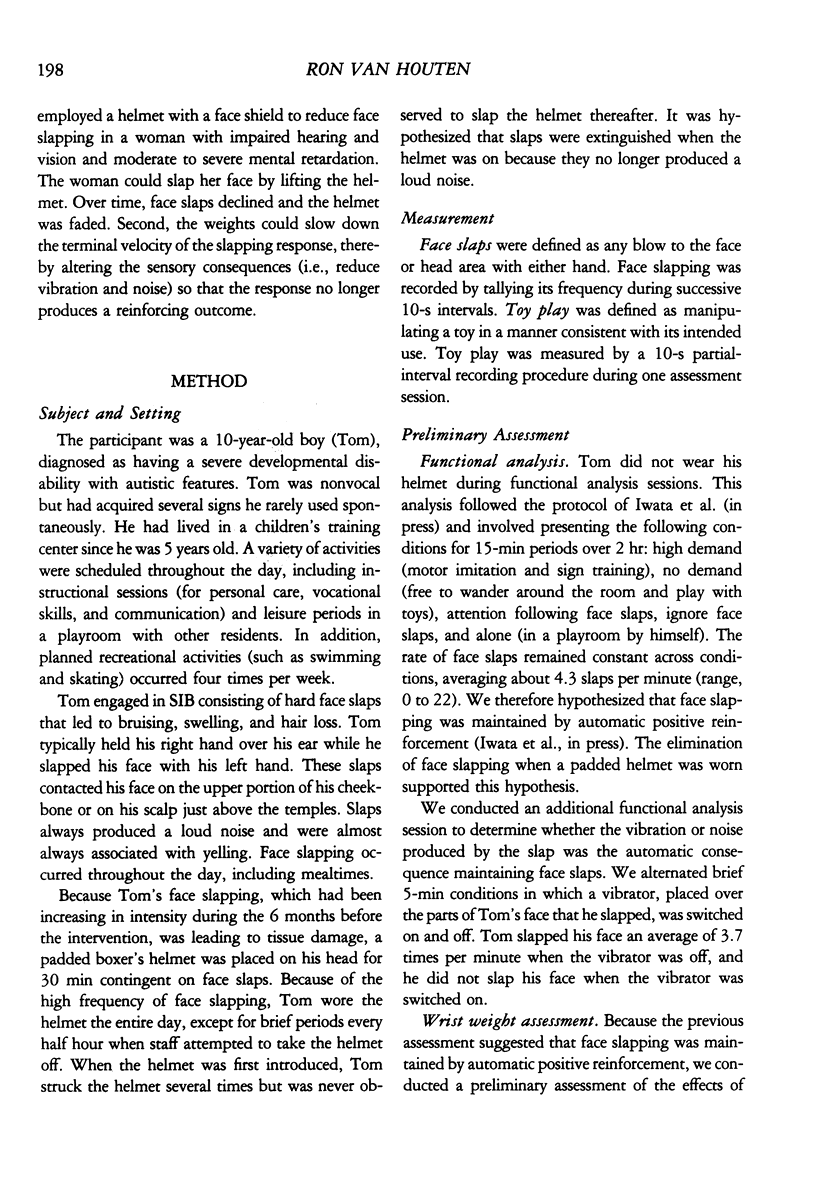
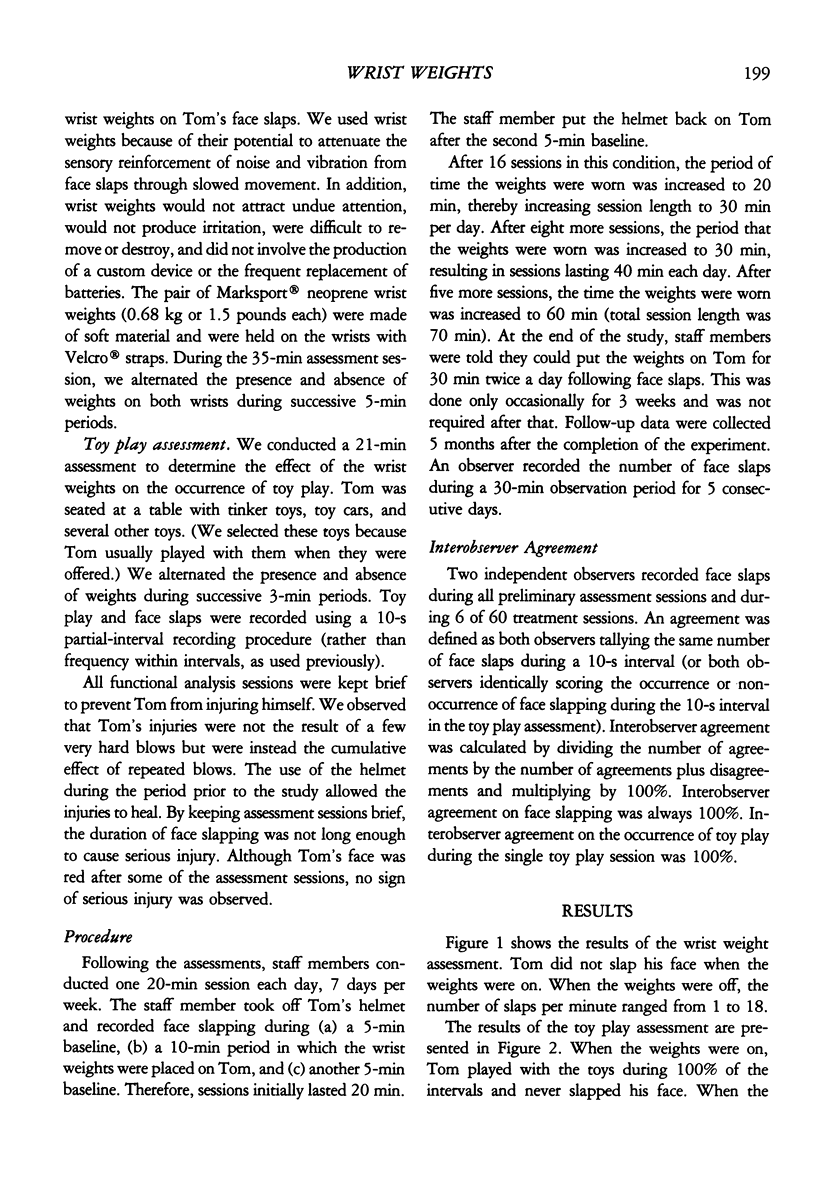
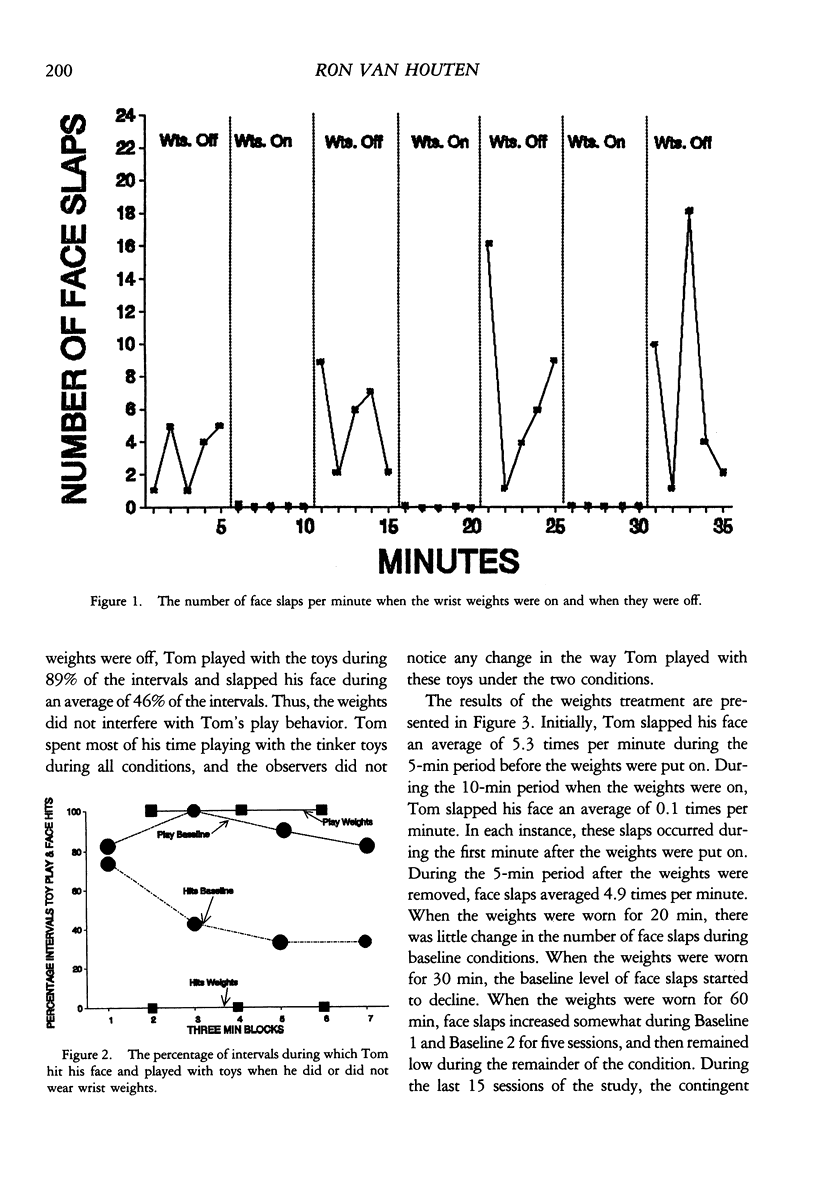
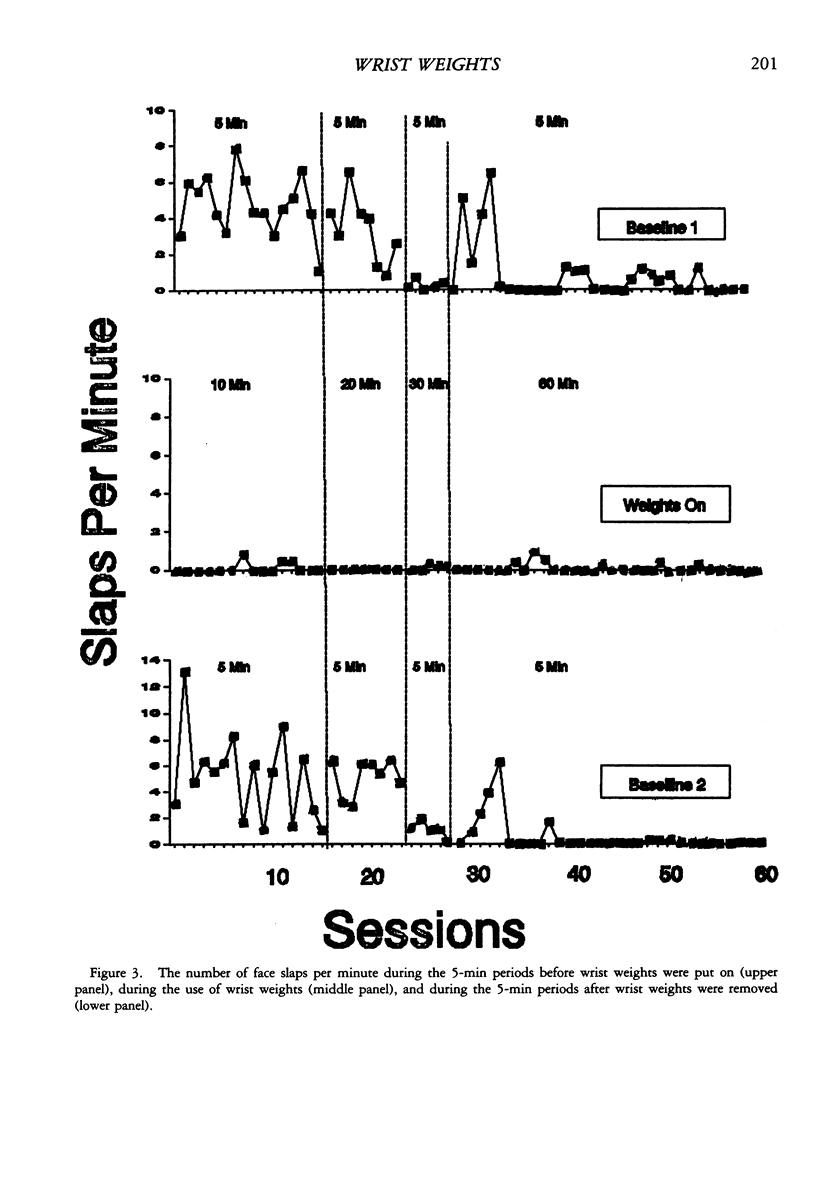
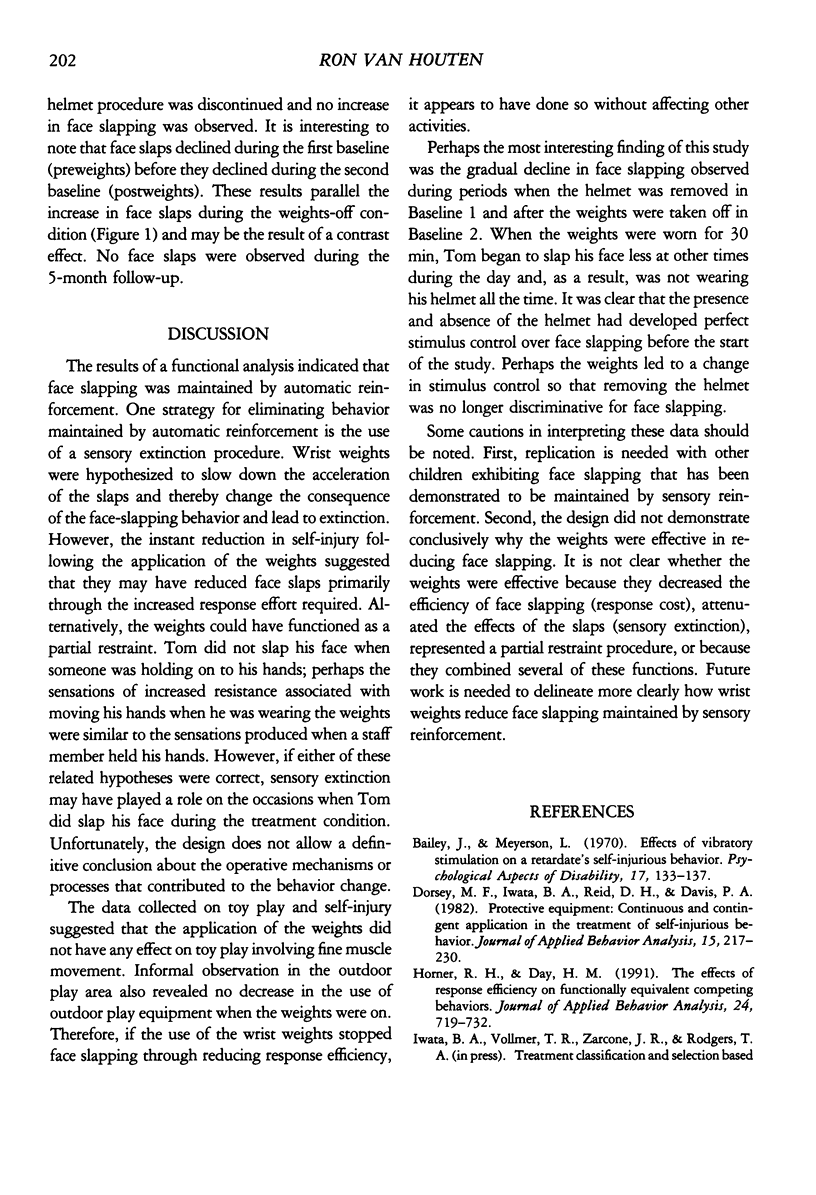
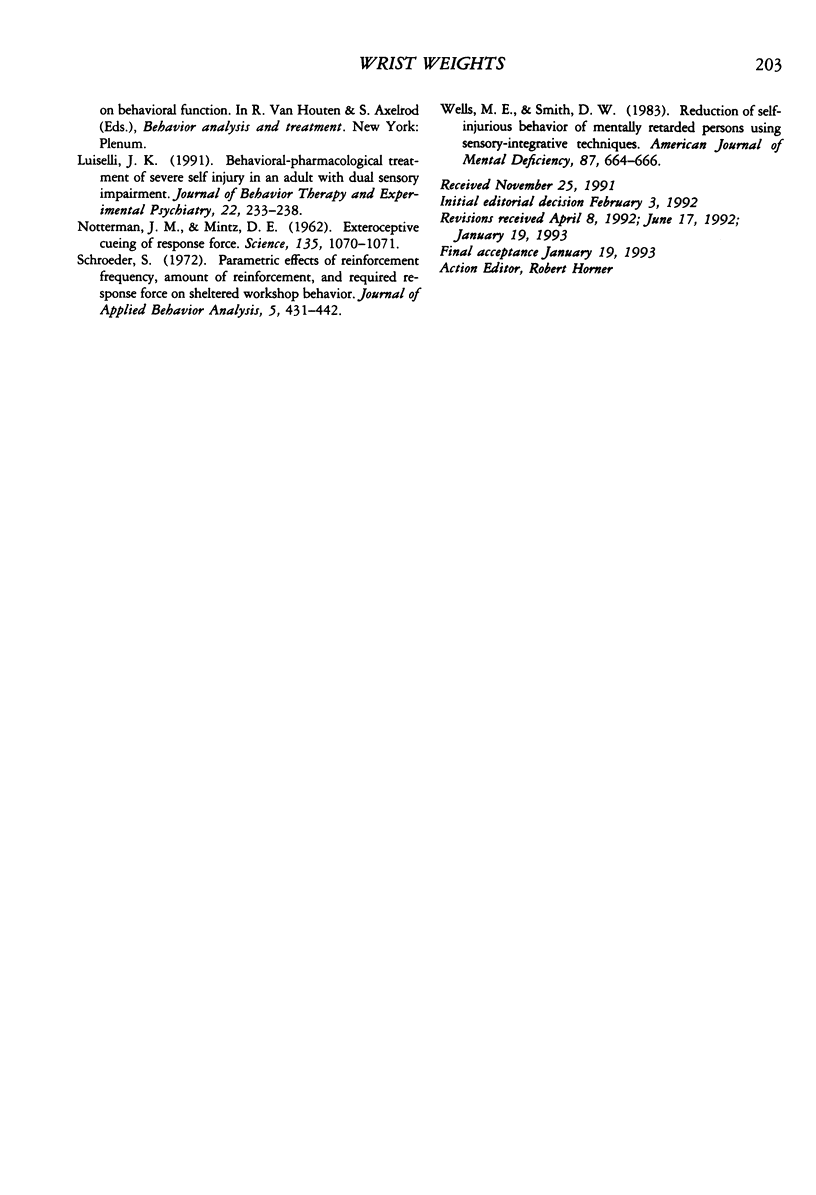
Selected References
These references are in PubMed. This may not be the complete list of references from this article.
- Dorsey M. F., Iwata B. A., Reid D. H., Davis P. A. Protective equipment: continuous and contingent application in the treatment of self-injurious behavior. J Appl Behav Anal. 1982 Summer;15(2):217–230. doi: 10.1901/jaba.1982.15-217. [DOI] [PMC free article] [PubMed] [Google Scholar]
- Horner R. H., Day H. M. The effects of response efficiency on functionally equivalent competing behaviors. J Appl Behav Anal. 1991 Winter;24(4):719–732. doi: 10.1901/jaba.1991.24-719. [DOI] [PMC free article] [PubMed] [Google Scholar]
- Luiselli J. K. A non-aversive behavioral-pharmacological intervention for severe self-injury in an adult with dual sensory impairment. J Behav Ther Exp Psychiatry. 1991 Sep;22(3):233–238. doi: 10.1016/0005-7916(91)90022-w. [DOI] [PubMed] [Google Scholar]
- NOTTERMAN J. M., MINTZ D. E. Exteroceptive cueing of response force. Science. 1962 Mar 23;135(3508):1070–1071. doi: 10.1126/science.135.3508.1070. [DOI] [PubMed] [Google Scholar]
- Schroeder S. R. Parametric effects of reinforcement frequency, amount of reinforcement, and required response force on sheltered workshop behavior. J Appl Behav Anal. 1972 Winter;5(4):431–441. doi: 10.1901/jaba.1972.5-431. [DOI] [PMC free article] [PubMed] [Google Scholar]
- Wells M. E., Smith D. W. Reduction of self-injurious behavior of mentally retarded persons using sensory-integrative techniques. Am J Ment Defic. 1983 May;87(6):664–666. [PubMed] [Google Scholar]


